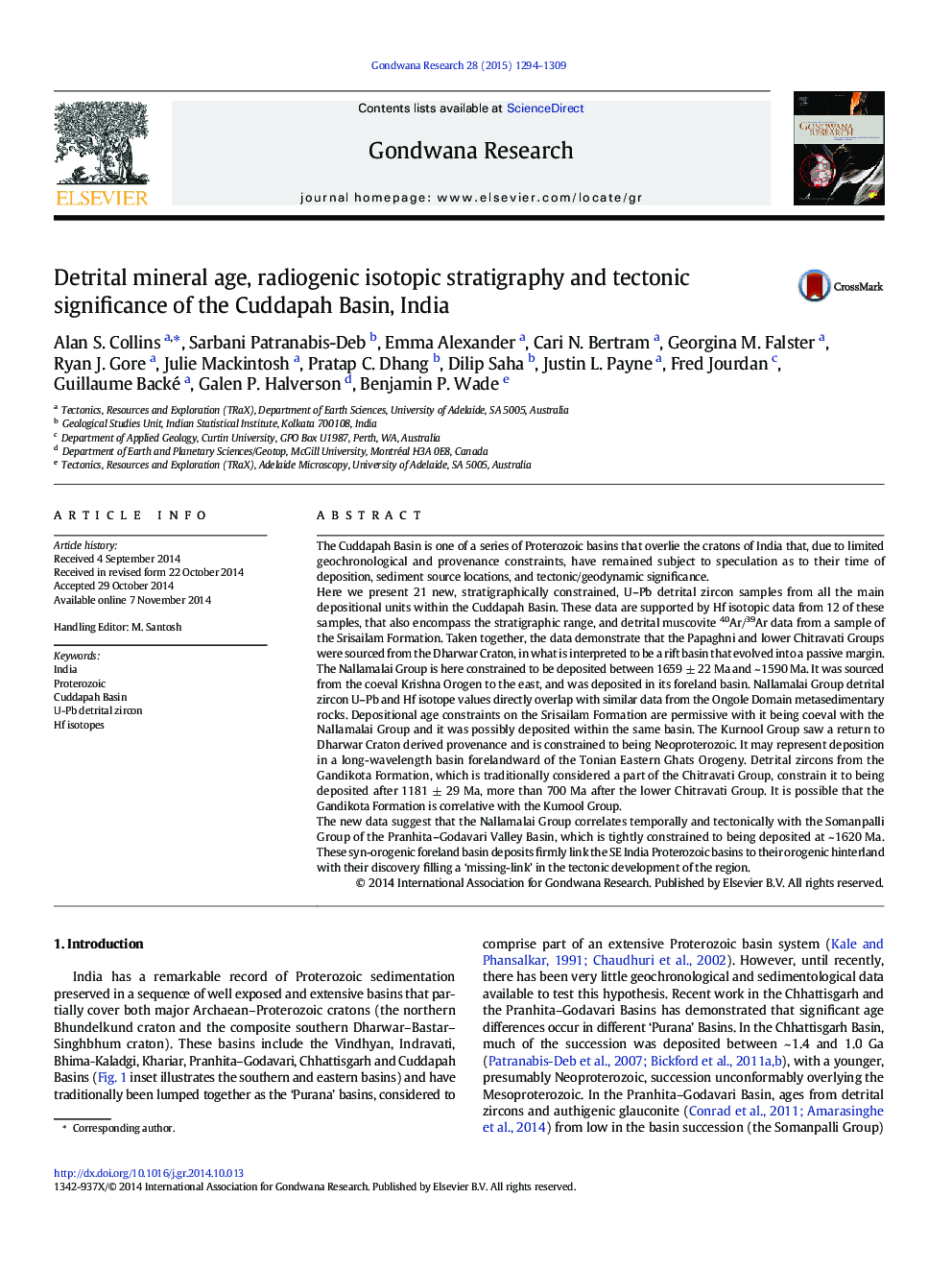| کد مقاله | کد نشریه | سال انتشار | مقاله انگلیسی | نسخه تمام متن |
|---|---|---|---|---|
| 4726692 | 1356343 | 2015 | 16 صفحه PDF | دانلود رایگان |
• Deposition of Cuddapah Basin constrained by 21 detrital zircon samples
• Papaghni and lower Chitravati Gps Dharwar Craton formed a rift-passive margin.
• Nallamalai Gp deposited in foreland basin to Krishna Orogen at ~ 1620 Ma.
• Kurnool Gp formed intracontinental basin derived from Dharwar Carton.
• Detrital zircon U–Pb, Hf and muscovite 40Ar/39Ar unravel basin evolution.
The Cuddapah Basin is one of a series of Proterozoic basins that overlie the cratons of India that, due to limited geochronological and provenance constraints, have remained subject to speculation as to their time of deposition, sediment source locations, and tectonic/geodynamic significance.Here we present 21 new, stratigraphically constrained, U–Pb detrital zircon samples from all the main depositional units within the Cuddapah Basin. These data are supported by Hf isotopic data from 12 of these samples, that also encompass the stratigraphic range, and detrital muscovite 40Ar/39Ar data from a sample of the Srisailam Formation. Taken together, the data demonstrate that the Papaghni and lower Chitravati Groups were sourced from the Dharwar Craton, in what is interpreted to be a rift basin that evolved into a passive margin. The Nallamalai Group is here constrained to be deposited between 1659 ± 22 Ma and ~ 1590 Ma. It was sourced from the coeval Krishna Orogen to the east, and was deposited in its foreland basin. Nallamalai Group detrital zircon U–Pb and Hf isotope values directly overlap with similar data from the Ongole Domain metasedimentary rocks. Depositional age constraints on the Srisailam Formation are permissive with it being coeval with the Nallamalai Group and it was possibly deposited within the same basin. The Kurnool Group saw a return to Dharwar Craton derived provenance and is constrained to being Neoproterozoic. It may represent deposition in a long-wavelength basin forelandward of the Tonian Eastern Ghats Orogeny. Detrital zircons from the Gandikota Formation, which is traditionally considered a part of the Chitravati Group, constrain it to being deposited after 1181 ± 29 Ma, more than 700 Ma after the lower Chitravati Group. It is possible that the Gandikota Formation is correlative with the Kurnool Group.The new data suggest that the Nallamalai Group correlates temporally and tectonically with the Somanpalli Group of the Pranhita–Godavari Valley Basin, which is tightly constrained to being deposited at ~ 1620 Ma. These syn-orogenic foreland basin deposits firmly link the SE India Proterozoic basins to their orogenic hinterland with their discovery filling a ‘missing-link’ in the tectonic development of the region.
Figure optionsDownload as PowerPoint slide
Journal: Gondwana Research - Volume 28, Issue 4, December 2015, Pages 1294–1309
